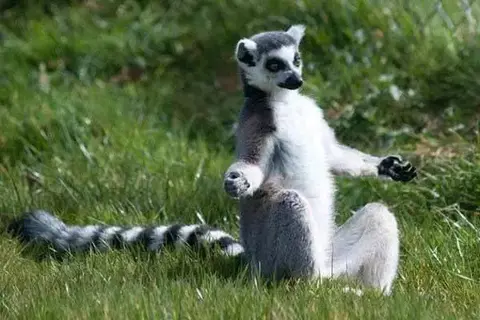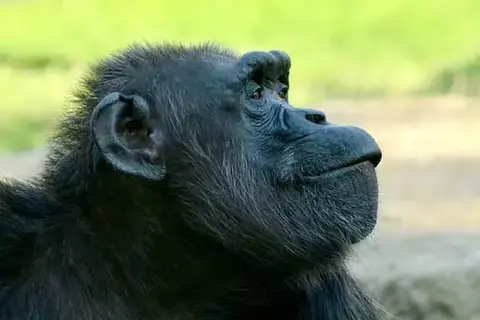15 Interesting Facts About Ladybugs
Noah YoungSmall and harmless ladybugs are well known to everyone. Hardworking, bright, and visible, these insects are not like most others. Today we will tell you interesting facts about ladybugs.
Facts about ladybugs
 Photo by Pixabay on pexels
Photo by Pixabay on pexels1.Their different species live all over the planet, without meeting only in the polar zones and Antarctica.
2.All species of ladybug’s abdomen consists of 6 segments.
3.On the head of most ladybugs have 11 thin bundles, but sometimes there are 10 of them.
4.There are more than 5000 species of ladybugs worldwide.
5.During the flight, the ladybug wings up to 80-85 times per second.
6.Ladybugs’ stains are designed to scare away predators. Strangely enough, it works.
7.Birds do not hunt these insects.
8.Ladybugs are perennial insects, and during the winter they live off the accumulated reserves for the summer.
9.Depending on the type of ladybugs there are different colors: pink, yellow, white, orange, and even black.
10.As a ladybug gets older, it has fewer spots on its back, and its color becomes duller.
11.Depending on the species, the ladybug can lay up to 2000 eggs in its lifetime. Ladybugs are the main fighters of aphids that eat plants, so farmers treat these insects very gently.
12.When the ladybug is attacked, it may respond by splashing sharp smelling liquid from the knee joints of its legs. The smell warns the frogs and predators that this insect is poisonous.
13.In case of an attack by a predator, ladybugs sometimes pretend to be dead.
14.The vast majority of ladybugs are predators, but there are also completely plant-eating species among them.
15.Few insects can boast established monuments, but this does not concern the ladybug. Monuments have been erected in its honor in different countries: in New York and the suburbs of Milwaukee in the state of Wisconsin in the USA, in Tokyo, the capital of Japan, in South Korea – in Seoul, in the capital of Poland – in Warsaw, in the French town of Milwaukee and in Russia – in Volgograd.
Did you like interesting facts about ladybugs? Share it with your friends.
See also 25 interesting facts about insects
Fun Facts About Ladybugs
 Photo by Pixabay on pexels
Photo by Pixabay on pexelsThe family Coccinellidae includes small beetles ranging in size from 0.8 to 18 mm. In the English-speaking world, they are commonly referred to as ladybugs. However, the true name of the insect is unknown. Despite their strange appearance, ladybugs are a very interesting insect to learn about. Listed below are some fun facts about ladybugs. These bugs live in a wide variety of habitats, including gardens, lawns, and even inside your home.
The color of ladybugs is meant to alert predators that they are poisonous. They cluster together to increase their warning coloration. While hibernating, ladybugs can fly up to 120 km (74 miles) in one day. This makes them incredibly fast and a real nuisance to humans and pets. They can survive as long as a year and have two sets of wings. The outer set is a hard shell for protection, while the inner set is for flight.
Despite being small and harmless, ladybugs are highly visible, and people love them because of their bright colors. Some ladybug species are bright red with seven dots. These bugs are very attractive to humans, and their harmless demeanor makes them an excellent choice as a gift for children. If you’re a fan of these bugs, there are many fun facts about ladybugs to keep in mind.
Ladybugs are found in almost every country in the world. They come in a variety of colors and patterns, but the most common is the red ladybug with 7 spots. In order to protect themselves from predators, ladybugs play dead and release foul-smelling liquid when startled. Their life span is around two and a half years, but their names may differ. So it’s important to learn all you can about these insects before you purchase them.
Ladybugs are known for their colorful appearance. The common red ladybug is a good luck symbol. The black and red colors are often thought to attract good fortune. If you are looking for a ladybug, it may be a great choice for a gift for your child. Its colorful appearance makes it one of the most lovable insects, and is said to be an excellent indicator of fertility. You can find them in many different colors.
Some species of ladybugs are beneficial to humans. They live in warm climates and are often called ladybugs by people. They are social insects that live in swarms. They are not known to harm humans, but they can be annoying pests if you don’t like them. They aren’t harmful to plants but can be a nuisance, but they can be a nuisance. A swarm of ladybugs can destroy an entire crop.
In addition to being a beneficial insect, ladybugs can be extremely fascinating. They have many fun facts about them, including their behavior. These insects are brightly colored and are often seen in gardens. Unlike many insects, ladybugs are harmless and do not cause damage to crops. They are often very beneficial to humans, and they have a wide range of uses. They are not only beneficial to the environment but they also can bring prosperity to our lives.
The ladybugs have three main parts: the head, the body, and the antennae. These three parts help ladybugs move around and stay alive. Some species have 6 legs, while others have twenty or more. Some ladybugs have four or more spots, while others have four or five. They are solitary and rarely cause any damage to humans. If you are a parent of a child, you can teach her fun ladybug facts.
The name Ladybug was given to the insect because it is an excellent gift for newborns. The Oxford dictionary says that the ladybug is named after the Virgin Mary. A number of fun ladybug facts are included in this book. They also have a pull-out poster that will make great educational tools for young kids. When they are born, they are known to live for a long time. They also live in their eggs.
- CatsThe Cutest Animals Of The World

- LivestockInteresting Facts About DonkeysBy Lucas Torres

- DogsPuppy Health BasicsBy Karla Miller

- Wildlife7 Interesting Facts About ChimpanzeesBy Charlotte Green

- RodentsCan A Hamster And A Cat Live Together?By Noah Young

- BirdsAmazing Ravens Of The Tower Of LondonBy Murphy Scott

- WildlifeGibbon Diet And Other Gibbon FactsBy Murphy Scott

- DogsWhat Is Chinchilla Life Expectancy?By Khai Dove

- Birds22 Interesting Facts About EaglesBy Lucas Torres

- Birds50 Interesting Facts About CockatooBy Khai Dove
